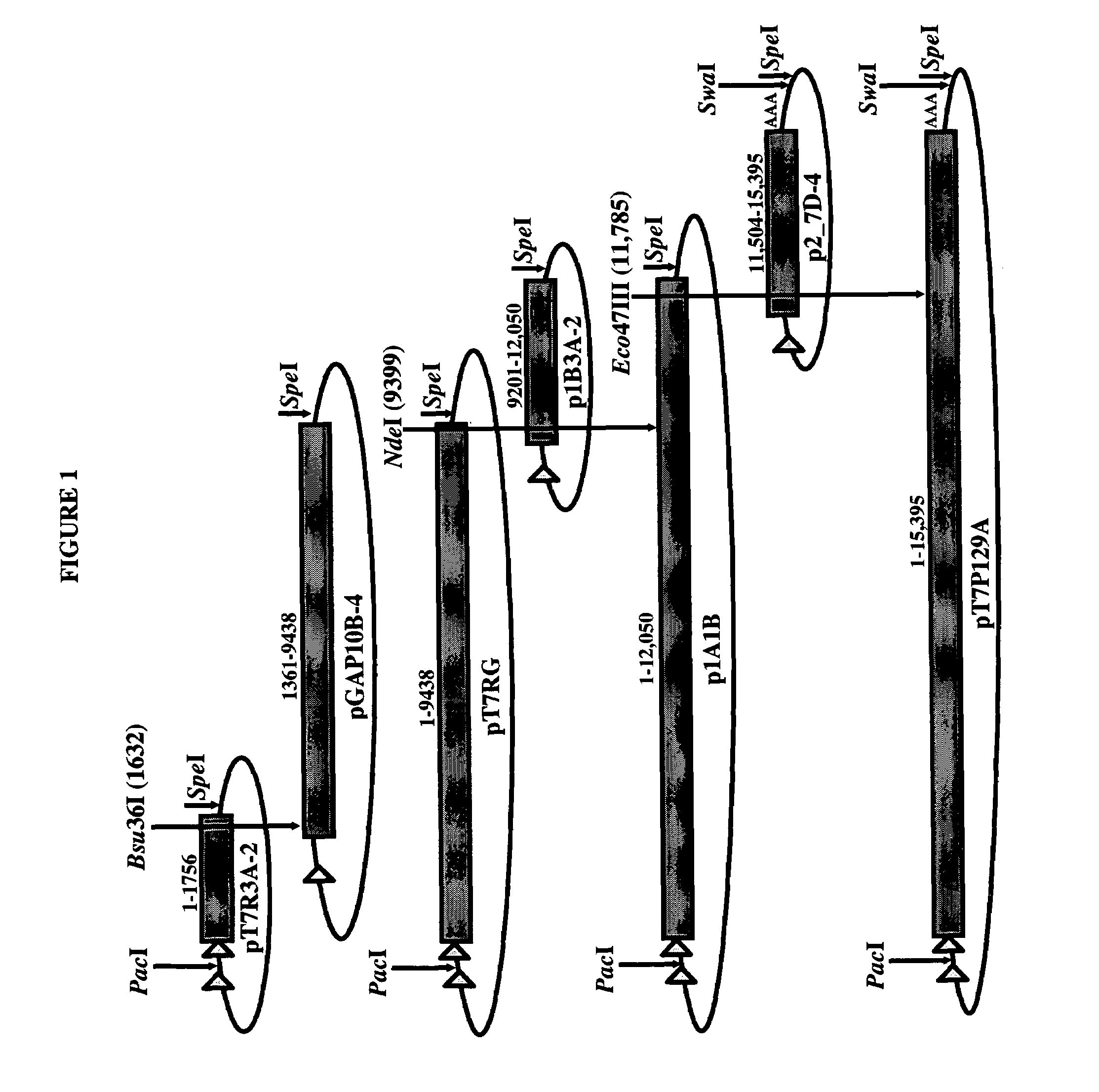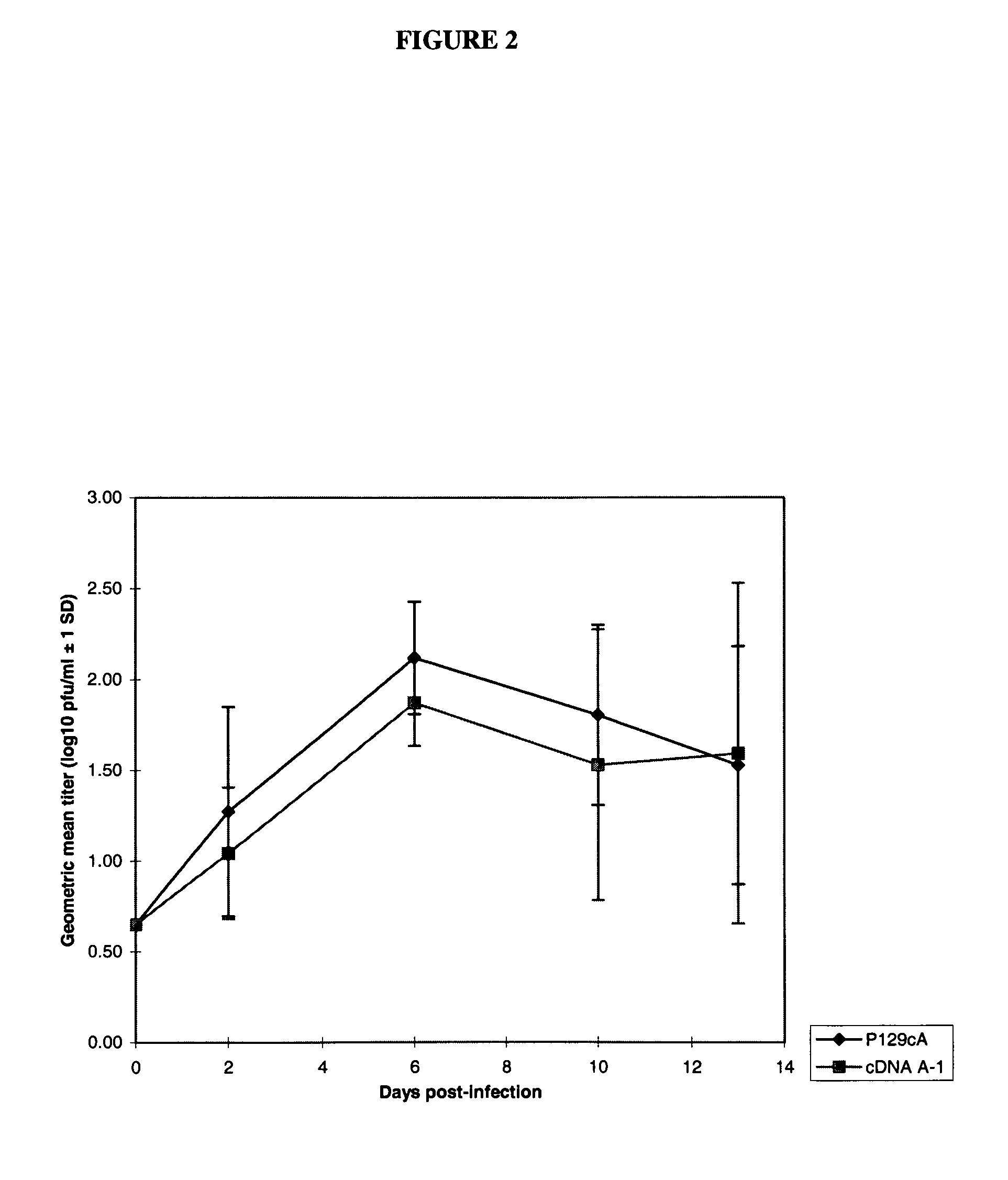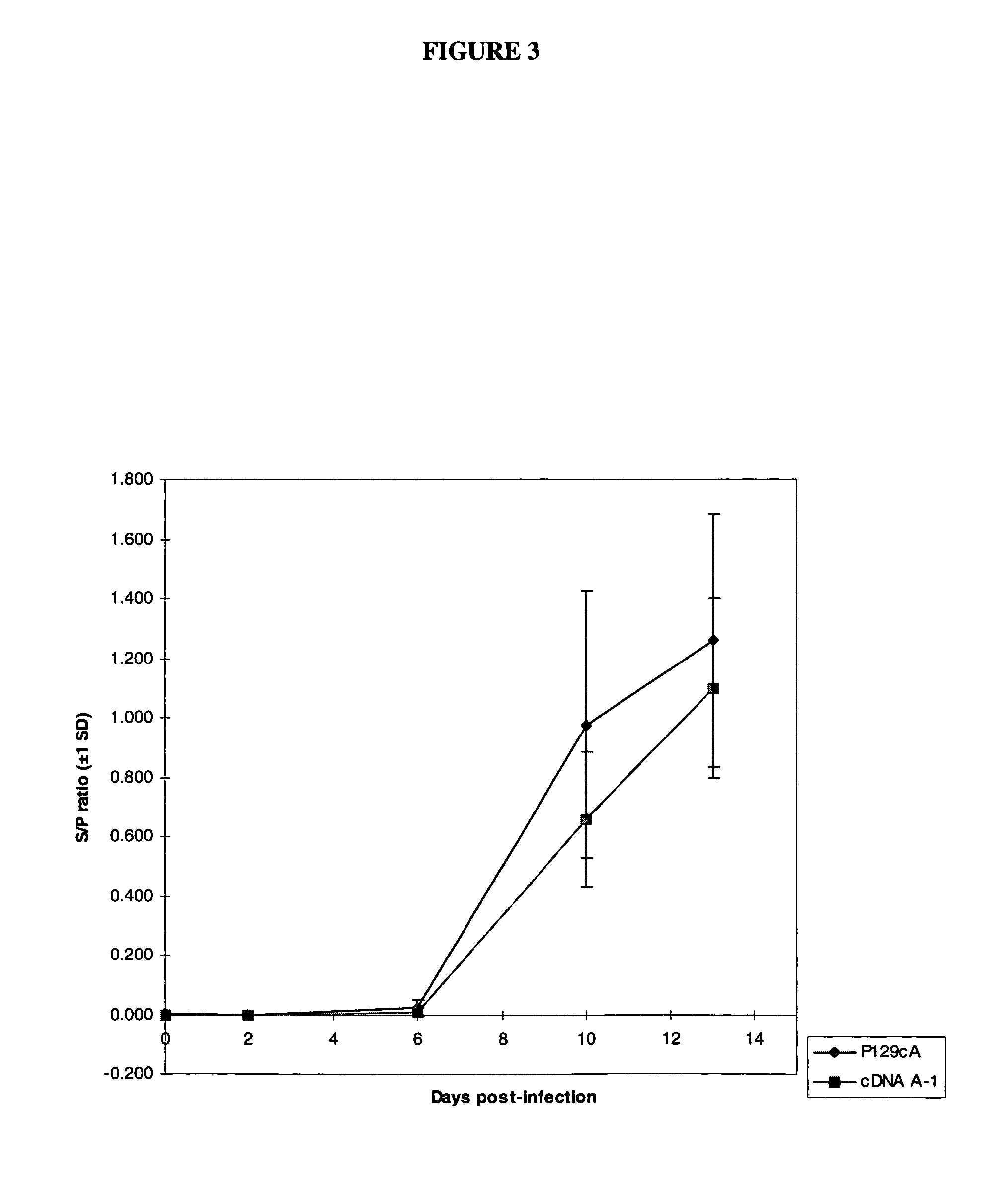Infectious cDNA clone of North American porcine reproductive and respiratory syndrome (PRRS) virus and uses thereof
a technology cdna clone, which is applied in the field of animal health, can solve the problems of labored breathing, affecting the growth rate of porcine reproductive and respiratory syndrome, and affecting the survival rate of porcine reproductive and respiratory syndrome, and achieves the effects of slow growth rate, reduced cdna clone, and reduced cdna clone ra
- Summary
- Abstract
- Description
- Claims
- Application Information
AI Technical Summary
Benefits of technology
Problems solved by technology
Method used
Image
Examples
example i
Preparation of an Infectious cDNA Clone of a North American PRRS Virus Isolate
[0122]Source of PRRS virus and MARC-145 cells: A North American PRRS virus isolate designated P129 was obtained from Drs. Gregory W. Stevenson, William G. Van Alstine, and Charles L. Kanitz of Purdue University's Animal Disease Diagnostic Laboratory in West Lafayette, Ind. The P129 virus was originally isolated in the autumn of 1995 from a swine herd in southern Indiana experiencing a severe PRRS outbreak. This farm had no previous history of PRRS problems or PRRS vaccination. The P129 isolate was more virulent than several other field isolates from the same time period and geographic area, in that it produced more severe and more consistent respiratory disease in young pigs. The virus was initially isolated on primary porcine alveolar macrophage (the natural host cell), and subsequently passaged on MARC-145 cells (Kim et al., 1993). Genes encoding structural proteins of P129 were found to be homologous to...
example ii
Deletion of ORF7 (Nucleocapsid Gene) from the North American PRRS Virus; Preparation of a Negatively-Marked, Replication-Defective Vaccine Thereby
[0144]The viral nucleocapsid gene (ORF7) was partially deleted from an infectious cDNA clone of the PRRS virus of the present invention. The resulting recombinant modified PRRS virus would be expected to be replication-defective in pigs. This recombinant modified PRRS virus can be used as a vaccine to induce an immune response to the other PRRS virus proteins without the risks of clinical disease, spread to non-vaccinated animals, or reversion to virulence associated with attenuated live vaccines. In addition to being very safe, such a vaccine virus would also be “negatively marked”, in the sense that it would allow exposure to field isolates of PRRS virus to be determined serologically, even in the presence of antibody to the vaccine virus. Antibodies to the ORF7 protein are commonly found in the sera of PRRS virus-infected pigs, whereas ...
example iii
Insertion of Heterologous Genes into the North American PRRS Virus Genome; Use of PRRS Virus as a Vector, and a Positively-Marked North American PRRS Virus
[0149]In Example II, above, AflII and MluI restriction enzyme sites were inserted into the region formerly occupied by the 5′ end of ORF7. These sites are absent in the P129A genome and in the pCR2.1 and pCMV plasmids, and can be used in the directional cloning of foreign (heterologous) genes into the viral genome for expression. Potential leader-junction sites for transcription of the ORF7 subgenomic RNA at positions 14,744-14,749 (ATAACC) and 14,858-14,863 (TAAACC) are not affected by deletion of the ORF7 coding sequence, and can function in transcription of a foreign gene. Foreign (heterologous) genes can include genes from other PRRS virus isolates or genotypes, and / or genes from other non-PRRS pathogens, either pathogens that infect swine or pathogens that infect mammals other than swine, or avians.
[0150]In addition, these fo...
PUM
| Property | Measurement | Unit |
|---|---|---|
| volume | aaaaa | aaaaa |
| volume | aaaaa | aaaaa |
| apparent molecular weight | aaaaa | aaaaa |
Abstract
Description
Claims
Application Information
 Login to View More
Login to View More - R&D
- Intellectual Property
- Life Sciences
- Materials
- Tech Scout
- Unparalleled Data Quality
- Higher Quality Content
- 60% Fewer Hallucinations
Browse by: Latest US Patents, China's latest patents, Technical Efficacy Thesaurus, Application Domain, Technology Topic, Popular Technical Reports.
© 2025 PatSnap. All rights reserved.Legal|Privacy policy|Modern Slavery Act Transparency Statement|Sitemap|About US| Contact US: help@patsnap.com



